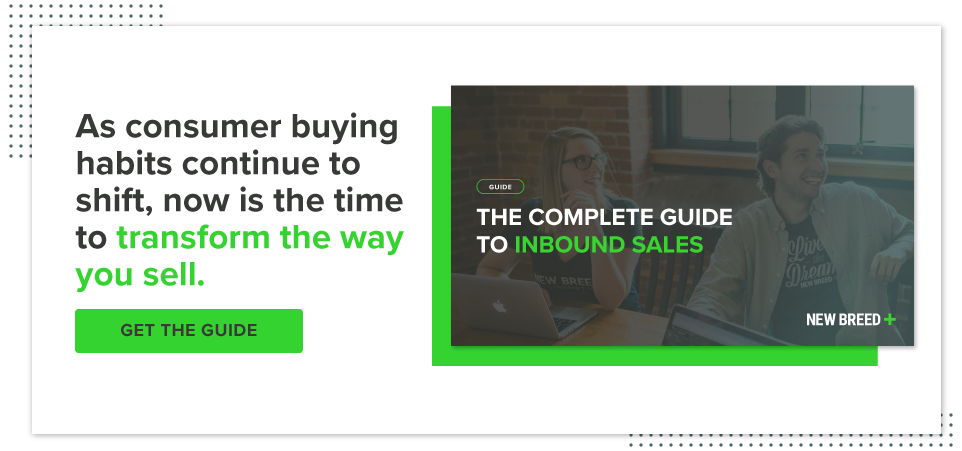How to Improve Your Virtual Product Demos to Increase Conversions

In the software-as-a-service (SaaS) space, virtual product demos are a normal part of day-to-day work. However, not everyone knows quite how to do a great demo.
Even if you feel fairly confident in your skills, chances are there are ways you could improve your virtual product demo meetings to increase your conversion rate. Want to know how to run a great virtual demo that will persuade your prospective customers that your product is exactly what they’re looking for? Read on to learn some of the biggest mistakes you might be making and how to fix them.
Mistake 1: Skipping the Discovery Call
Virtual sales demos see a 73% reduction in conversions if they are not preceded by a discovery call. Many salespeople make the mistake of skipping straight to the demo without bothering to get to know the prospect thoroughly first. Don’t be one of them.
The discovery call should last around 30 minutes and be focused on learning everything you can about the prospect.
Ask them these questions:
- What’s the main problem you are facing in your business right now?
- How would that problem be solved in your ideal world?
- What solutions have you tried, and why didn’t they work?
- What budget are you working with for this project?
- How much do you know about our product?
Only after you’ve completed a successful discovery call, should you schedule a demo meeting. Without it, you’re trying to sell to a person you know nothing about — and that is not the way to generate conversions!
A person who is open to a product demo is likely at the “interest” stage of your marketing funnel. By getting to know them, you’re better prepared to push them towards the “desire” section and ultimately, towards the “action” stage.
Mistake 2: Failing to Prepare
You’d be amazed how many salespeople think they can “wing it” in their product demo meetings. Well, you can, but you won’t get those conversions. If you don’t prepare, you fall at the first hurdle.
First, never go into a product demo meeting without a clear agenda that everyone has seen and had input on. Allow time for small-talk, questions and discussing next steps as well as the demo itself. I tend to schedule demo meetings to last between 45 minutes and 1 hour.
Next, you need to ensure you’ve got all the tools and technology you need. At a minimum, you should have:
- A good-quality headset and microphone
- A video conferencing tool that allows screen-sharing. I prefer to use Zoom, but you can try a few tools to see what works for you
- A way to record the meeting so you and the prospect can refer back to it later.
- A solid internet connection
Always test your tech before the meeting. It’s a good idea to have a backup plan in case something goes wrong, too.
Next, you need to prepare your presentation. Even if you’ve run hundreds of demos before, you’ve never run one for this client. You’ll need to prepare your slides if you’re using them, decide which product features to focus on, collate social proof such as case studies and client testimonials and add appropriate sample data to the demo version of your product. You should also anticipate the sales objections you’ll likely hear and plan how to address them.
By being thoroughly prepared, you give yourself the best chance of persuading the prospect to convert.
Mistake 3: Focusing on Features Instead of Value
Here’s something about your virtual product demo that might surprise you: it’s not actually about the product! (Incidentally, it isn’t about you either). A product demo meeting that converts is centered on the client. The biggest mistake I see salespeople make again and again is in showing off a product’s features without focusing on the benefit it will bring.
So forget about showing off all the awesome, innovative features that your product has. Instead, return to that first conversation you had with the client and ensure you understand their pain points and problems. Now choose just a small number of product features that will directly address those problems and center your demo on those.
The key is to show exactly how the product will benefit this particular prospect and their business. Tell a story that starts with the client and their problem and ends with a situation in which their problem is solved (with the help of your product, naturally). This is known as story-selling.
For example, imagine you’re selling a social media management platform, and you know your prospective client is most active on Instagram. You might tell a story about how your platform can help them grow their Instagram following this year and showcase the specific aspects that will lead to that outcome.
In other words, emphasize value, not features. Your prospective client doesn’t care how innovative your product is. They care about what it can do for them. So show them that.
Mistake 4: Failing to Personalize
Do you think you can develop one generic product demo presentation and reuse it with all clients? If so, you’re making a big mistake that is almost certainly losing you conversions. Nothing in sales can be generic. Customers expect a personalized experience and it is your job to provide it.
We’ve already discussed the importance of focusing on benefits and demonstrating how your product can solve your prospect’s specific pain-points. Here are a few other great ways to personalize a remote product demo:
- Take the time to make small-talk at the start of the meeting. Rapport builds trust, so take the time to develop it
- Use sample data that is relevant to your prospect’s business. This makes it relatable and allows them to picture themselves using your product
- Use case studies and testimonials from similar types of clients
This might all seem very time-consuming, but there is simply no substitute for personalization if you want to land those conversions from your virtual product demo.
Mistake 5: Lecturing
The most off-putting thing salespeople do? Launch into a monologue and not pause for breath! Please resist the temptation to view a product demo as a lecture or to talk at your prospective customer for an hour. They will just switch off if you do.
Instead, make your virtual product demo meeting a collaborative experience. Invite the prospect to engage by asking for their input, soliciting their thoughts and encouraging them to ask questions.
While it’s important to prepare your presentation, you must never sound as though you are simply reciting from a script.
Try to pause after you make a point or show off a particular product feature. This makes space for the client to think, ask questions and respond to what you’ve said. Many people are afraid of even the shortest of silences in a sales meeting. The quicker you get comfortable with them, the more smoothly your meetings will go.
Mistake 6: Neglecting the Follow-Up Stage
Most demo meetings do not end in an immediate conversion. The prospect may need time to think or to discuss your solution with other stakeholders. Many salespeople conduct great product demos and then lose the sale at this stage by failing to follow up.
If you conduct lots of demo meetings but struggle to get sales, ending the demo call without a clear idea of the next steps might be your mistake. Assuming your prospect doesn’t sign a contract there and then, you’ll need to follow up.
Before you finish the virtual product demo meeting, agree what you will do next. Will you call the prospect to follow up in a week’s time, send them some more information by email or book another meeting with them and others from their company? Whatever you do, don’t leave things hanging. If you do, your prospect may forget all about you. This increases the likelihood that a competitor who is more persistent in their follow-up process will get the sale instead. A timely follow-up really can make the difference between closing a sale and failing to do so.
Another tip: at the follow-up stage, sweeten the deal by offering an enticing bonus. This might be a 30-day free trial of your software, a limited-time discount or a relevant freebie if they sign up in the next week. Adding value is one of the best ways to nudge an undecided prospective customer into signing on the line.
Developing Product Demos That Increase Conversions
If you run virtual product demos, chances are you’re making at least some of the mistakes I’ve outlined here and losing sales because of it. Want to increase conversions and see your sales figures soar? Here’s how:
- Begin with a discovery call to learn as much as you can about the prospect
- Prepare: Create an agenda, build a great presentation and ensure you have all the tools you need
- Focus your presentation on the benefit your product will provide, not just the features it has
- Personalize the demo
- Follow-up promptly, ideally with an appealing bonus offer to close the sale
A virtual product demo is low-risk (it costs little but your time) and potentially very high-reward, but if you want to see conversions, you need to optimize your demo meetings. Don’t be disheartened if your sales figures aren’t where you want them to be — with a few strategic tweaks, your conversion rates will soar!
Matt Diggity
Matt Diggity is a search engine optimization expert focused on affiliate marketing, client ranking, lead generation, and SEO services. He is the founder and CEO of Diggity Marketing, The Search Initiative, Authority Builders, LeadSpring LLC, and host of the Chiang Mai SEO Conference.





